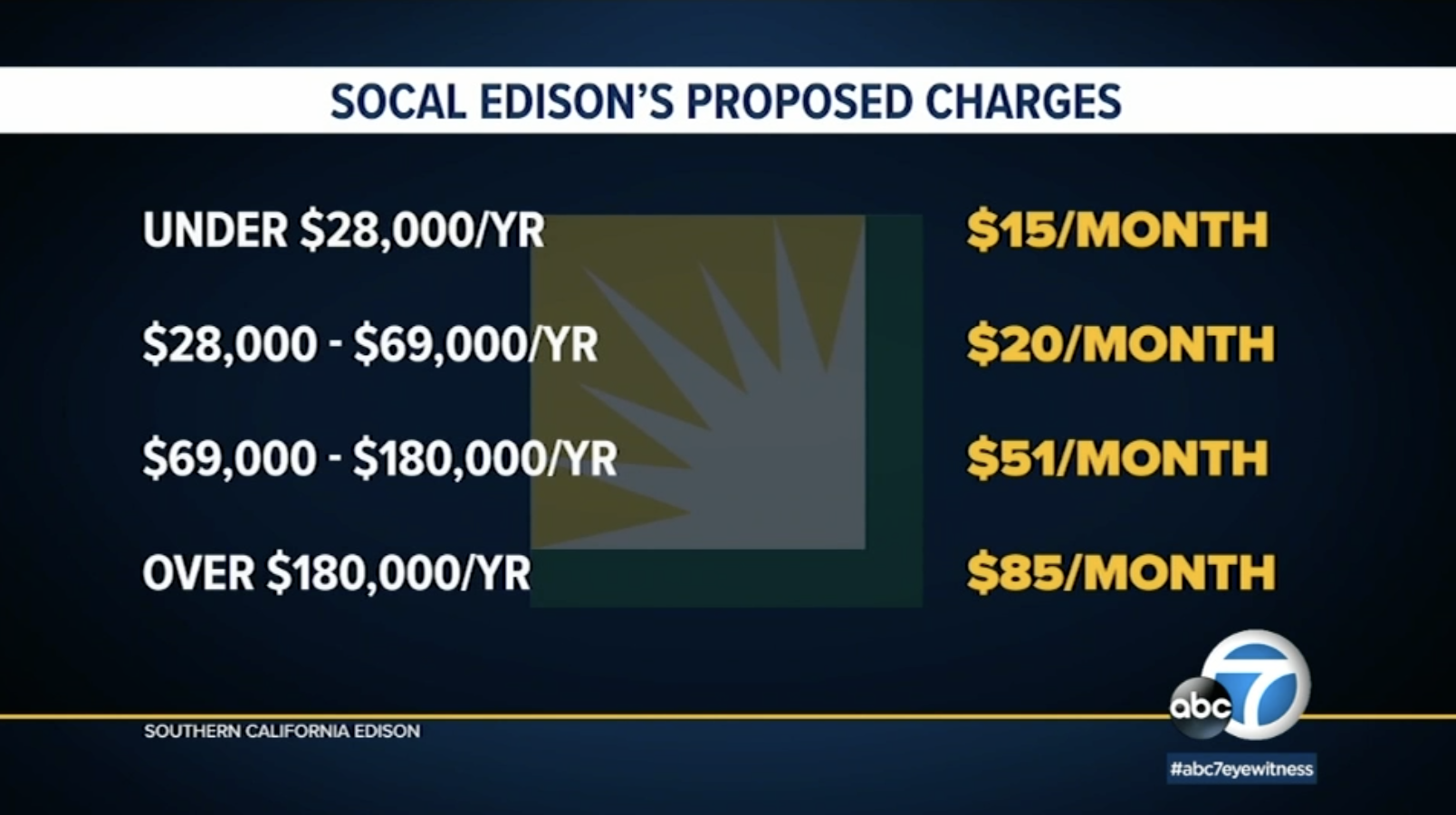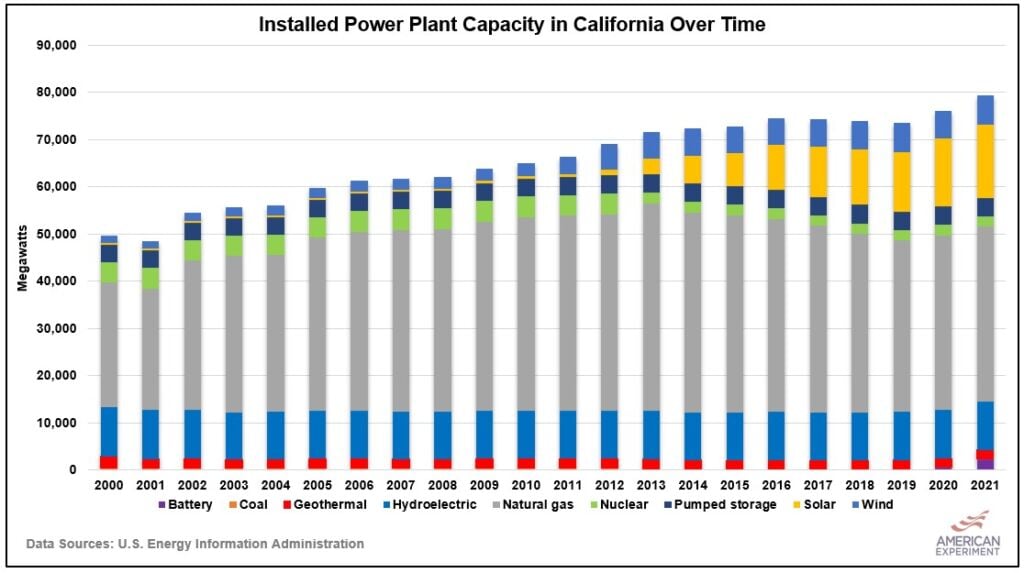California is introducing the first-ever graduated tax on electricity bills. Traditionally, utility bills are based on the user’s consumption. If you use twice as much electricity as your neighbor, you pay twice as much. But last year, California’s legislature passed a law that adds a de facto income tax to the state’s electric bills. Based on that law, three major utility companies in California are restructuring their customer billing with customers being charged based on how much money they make. Southern California Edison, Pacific Gas & Electric and San Diego Gas & Electric filed a joint proposal for a flat-rate charge based on income.
The plan would break monthly bills in two parts: a fixed infrastructure charge, tiered by customer income level as required by the law, and an electricity use charge, which would vary based on consumption. The new fixed fee would be $15 a month for lower income ratepayers, while upper income ratepayers earning more than $180,000 a year would pay a charge of $85 a month, or about $1,000 a year. The rest of the bill would be determined by consumption. The California Public Utilities Commission has to approve the proposal and make a final decision by mid-2024. The fixed rate could start as soon as 2025.

The companies estimate that the electricity use charge, called a rate, would initially fall by a third as more of the costs of providing electricity service are rolled into the fixed charges. The measure would potentially save low-income families on their power bills while charging higher-earning families more.
PG&E has also proposed a four-year plan that would increase utility rates by about 16 percent in year one — about $35.40 more each month for the average customer compared with 2022 — that state regulators are considering.
California’s Electricity System
California’s wind and solar mandates have led to skyrocketing electricity prices that have harmed low-income families. Electricity prices in California have increased three times faster than the national average since 2008, contributing to an enormous and increasing income inequality. Since 2008, when Governor Arnold Schwarzenegger signed an executive order requiring the state’s utilities to obtain a third of the electricity they sell from renewables by 2020, average electricity prices in California increased by 80 percent. California residents are now paying one of the highest electricity prices in the United States. In 2022, California’s residential electricity prices continued to increase and jumped by 14.7 percent.
California’s surging electricity costs have coincided with increasing renewable energy mandates and the closure of the San Onofre Nuclear Generating Station in 2012. In 2015, Governor Jerry Brown signed a law that boosted the mandate to 50 percent by 2030. In 2018, California lawmakers imposed yet another mandate that requires the state’s electric utilities to procure at least 60 percent of their electricity from renewables by 2030 and 100 percent “zero-carbon” electricity by 2045. In 2022, Governor Gavin Newsom signed into law a measure that “creates clean electricity targets of 90 percent by 2035” and reaffirmed the state’s target of 100 percent “clean electricity” by 2045.
Despite skyrocketing prices, California’s electric grid has grown increasingly unreliable. The state has been shutting down natural gas power plants since 2013 and has become overly reliant upon weather-dependent wind and solar generation and electricity imports from neighboring states. As the federal government adds more regulations against fossil fuels, California’s neighboring states are shutting down their reliable coal and natural gas plants, which means that they will not have enough power to bail out California in the future, and any power that they will have will be more expensive.

Instead of making the cost of electricity low so that everyone can afford it, California appears committed to mandating unreliable wind and solar technologies that will increase electricity costs and trying to correct it on the back end, which is hurting its residents. More than a third of Californians are living in or near poverty, resulting in California having the highest poverty rate in America. A 2021 report by the Public Policy Institute of California found that “More than a third of Californians are living in or near poverty. Nearly one in six (16.4 percent) Californians live fairly close to the poverty line … All told, more than a third (34.0 percent) of state residents were poor or near-poor in 2019.”
Conclusion
California has imposed income-based fixed utility charges that are a departure from the classic tenets of utility rate-making, which stress that customer expenses should be just and reasonable and based on the cost of providing the service to the customer. Instead, the state has essentially instituted a progressive income tax via the utility bills consumers pay. California already has one of the highest electricity prices in the country as it is has mandated weather-dependent wind and solar energy while shuttering natural gas and nuclear plants. When it is short on power, it attempts to get what’s needed from neighboring states. That won’t last as those states are also shuttering their reliable coal and natural gas plants as the federal government continues to regulate them out of service. California’s new income-based fixed utility charge is another defacto income tax. California seems to like to tax its citizens as it already has the highest income taxes in the country.
Margaret Thatcher once said, “The problem with socialism is that you eventually run out of other people’s money.” The problem with California-style electricity policy is that you eventually run out of other people’s electricity. California appears to be racing to run out of both other people’s money and electricity, making its energy policy a shining example of what not to do.



